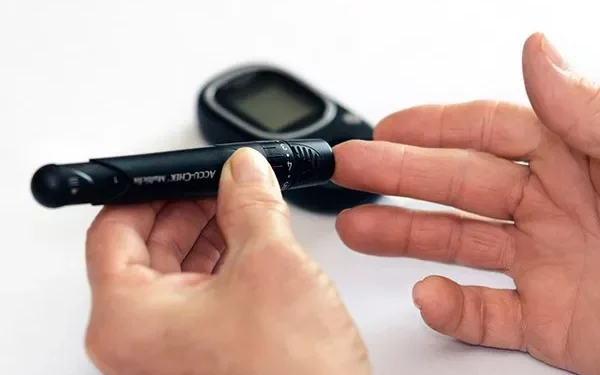Continuous glucose monitors (CGMs) have revolutionized diabetes management, providing real-time data on blood glucose levels and trends. This technology helps individuals with diabetes make informed decisions about their diet, exercise, and medication. With several CGMs on the market, choosing the best one can be challenging. This article will explore the top CGM options, their features, benefits, and drawbacks to help you determine which is the best continuous glucose monitor for your needs.
Understanding Continuous Glucose Monitors
What Is a CGM?
A continuous glucose monitor is a medical device that continuously tracks glucose levels in the interstitial fluid just beneath the skin. Unlike traditional blood glucose meters that require finger-prick blood samples, CGMs provide continuous data, allowing users to see glucose trends and patterns over time.
How Does a CGM Work?
A CGM system typically consists of three components:
- Sensor: A small device inserted under the skin to measure glucose levels.
- Transmitter: A device attached to the sensor that sends glucose data wirelessly to a receiver or smartphone.
- Receiver or Smartphone App: A device or application that displays real-time glucose data and trends.
CGMs measure glucose levels every few minutes, providing valuable insights into how food, physical activity, medication, and other factors affect blood sugar levels.
Top Continuous Glucose Monitors on the Market
Several CGMs are available, each with unique features and benefits. The following are some of the most popular and highly regarded CGMs:
Dexcom G6
Overview
The Dexcom G6 is one of the most widely used CGMs, known for its accuracy, ease of use, and integration with other diabetes management tools. It provides continuous glucose readings every five minutes, allowing for real-time monitoring and trend analysis.
Features
- No Fingersticks: The Dexcom G6 does not require fingerstick calibration, making it more convenient and less painful for users.
- Real-Time Data: Users can view their glucose levels in real-time on their smartphones or receivers.
- Customizable Alerts: The device can be set to alert users when their glucose levels are too high or too low.
- Integration with Insulin Pumps: The Dexcom G6 can integrate with certain insulin pumps for automated insulin delivery.
- 10-Day Sensor Life: Each sensor lasts up to 10 days, reducing the frequency of sensor changes.
Benefits
- High accuracy and reliability
- No need for fingerstick calibration
- Easy-to-use mobile app with customizable alerts
- Integration with insulin pumps for automated insulin delivery
Drawbacks
- Higher cost compared to some other CGMs
- Requires a prescription
- Sensor insertion can be uncomfortable for some users
FreeStyle Libre 2
Overview
The FreeStyle Libre 2 is another popular CGM that offers a combination of affordability, ease of use, and accurate glucose monitoring. Unlike some other CGMs, the FreeStyle Libre 2 uses a flash glucose monitoring system, requiring users to scan the sensor to get a glucose reading.
Features
- 14-Day Sensor Life: Each sensor lasts up to 14 days, reducing the frequency of sensor changes.
- No Fingersticks: The FreeStyle Libre 2 does not require fingerstick calibration.
- Real-Time Alerts: The device provides optional alarms for high and low glucose levels.
- Scanning Required: Users need to scan the sensor with a reader or smartphone to view glucose readings.
- Water-Resistant Sensor: The sensor is water-resistant, allowing users to swim, shower, and exercise without removing it.
Benefits
- Long sensor life (14 days)
- No need for fingerstick calibration
- Affordable compared to other CGMs
- Optional real-time alerts for high and low glucose levels
- Water-resistant sensor
Drawbacks
- Requires manual scanning to view glucose readings
- Limited integration with other diabetes management devices
- May not provide real-time data as consistently as other CGMs
Medtronic Guardian Connect
Overview
The Medtronic Guardian Connect CGM system offers advanced features and high accuracy, making it a popular choice for individuals who require detailed glucose monitoring and management. It provides continuous glucose readings and can integrate with Medtronic insulin pumps.
Features
- Real-Time Glucose Data: Provides continuous glucose readings every five minutes.
- Predictive Alerts: Offers predictive alerts for high and low glucose levels, allowing users to take action before reaching dangerous levels.
- Integration with Insulin Pumps: Can integrate with Medtronic insulin pumps for automated insulin delivery.
- Daily Calibration: Requires daily fingerstick calibration for optimal accuracy.
- Mobile App: Allows users to view glucose data on their smartphones.
Benefits
- High accuracy and reliability
- Predictive alerts for proactive glucose management
- Integration with Medtronic insulin pumps
- User-friendly mobile app
Drawbacks
- Requires daily fingerstick calibration
- Higher cost compared to some other CGMs
- Sensor insertion can be uncomfortable for some users
Eversense CGM
Overview
The Eversense CGM system is unique in that it offers a long-term implantable sensor that lasts up to 90 days. This feature reduces the frequency of sensor changes and provides continuous glucose monitoring for an extended period.
Features
- 90-Day Sensor Life: The implantable sensor lasts up to 90 days, reducing the need for frequent sensor changes.
- Removable Transmitter: The transmitter can be removed and reattached, allowing for more flexibility.
- Vibration Alerts: The transmitter provides vibration alerts for high and low glucose levels.
- Daily Calibration: Requires daily fingerstick calibration for optimal accuracy.
- Mobile App: Users can view glucose data on their smartphones.
Benefits
- Long sensor life (90 days)
- Removable transmitter for added flexibility
- Vibration alerts for discreet notifications
- User-friendly mobile app
Drawbacks
- Requires a minor surgical procedure to implant the sensor
- Daily fingerstick calibration needed
- Higher cost compared to some other CGMs
Factors to Consider When Choosing a CGM
Selecting the best CGM depends on various factors, including individual preferences, lifestyle, and medical needs. The following considerations can help determine which CGM is the best fit:
Accuracy and Reliability
Accuracy is paramount when choosing a CGM. Look for devices with high accuracy ratings and minimal discrepancies between sensor readings and actual blood glucose levels. User reviews and clinical studies can provide insights into a CGM’s reliability.
Ease of Use
Consider how easy the CGM is to use, including sensor insertion, calibration requirements, and data accessibility. Devices that do not require frequent calibrations or offer easy-to-use mobile apps can enhance the user experience.
Integration with Other Devices
For individuals using insulin pumps or other diabetes management tools, choosing a CGM that integrates seamlessly with these devices can provide added convenience and improve overall diabetes management.
Sensor Life
The lifespan of the sensor is an important factor to consider. Longer-lasting sensors reduce the frequency of sensor changes, which can be more convenient and cost-effective.
Alerts and Notifications
Look for CGMs that offer customizable alerts and notifications for high and low glucose levels. Predictive alerts can provide proactive warnings, allowing users to take action before reaching dangerous glucose levels.
Cost and Insurance Coverage
Cost is a significant consideration for many individuals. Evaluate the overall cost of the CGM system, including sensors, transmitters, and receivers. Additionally, check with insurance providers to determine coverage and out-of-pocket expenses.
User Reviews and Recommendations
Reading user reviews and seeking recommendations from healthcare professionals can provide valuable insights into the pros and cons of different CGMs. User experiences can highlight potential issues and benefits that may not be apparent from product specifications alone.
Making the Final Decision
Choosing the best CGM is a personal decision that depends on individual needs and preferences. The following steps can help guide the decision-making process:
Consult with Healthcare Providers
Discussing CGM options with healthcare providers, including endocrinologists and diabetes educators, can provide personalized recommendations based on medical history, lifestyle, and diabetes management goals.
Trial Periods and Samples
Some CGM manufacturers offer trial periods or sample devices. Taking advantage of these opportunities can allow individuals to test different CGMs and determine which one best meets their needs.
Evaluate Long-Term Benefits
Consider the long-term benefits and potential drawbacks of each CGM. While some devices may have higher upfront costs, their accuracy, ease of use, and integration with other diabetes management tools may provide greater overall value.
Personal Preferences
Ultimately, personal preferences play a significant role in choosing a CGM. Consider factors such as comfort, convenience, and user interface when making the final decision.
See also: How Do Blood Sugar Sensors Work?
Conclusion
Continuous glucose monitors have transformed diabetes management by providing real-time glucose data and insights. The best CGM for an individual depends on various factors, including accuracy, ease of use, sensor life, integration with other devices, cost, and personal preferences. The Dexcom G6, FreeStyle Libre 2, Medtronic Guardian Connect, and Eversense CGM are among the top options available, each offering unique features and benefits.
Consulting with healthcare providers, evaluating long-term benefits, and considering personal preferences can help individuals choose the best CGM to meet their needs and improve their diabetes management. With the right CGM, individuals with diabetes can achieve better glucose control, reduce the risk of complications, and enhance their overall quality of life.
Related topics:
How Do Bloodless Glucose Meters Work?


























